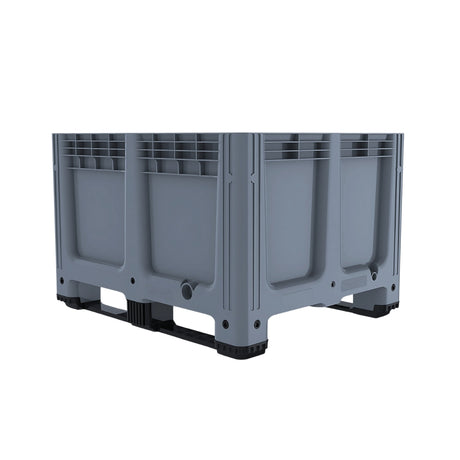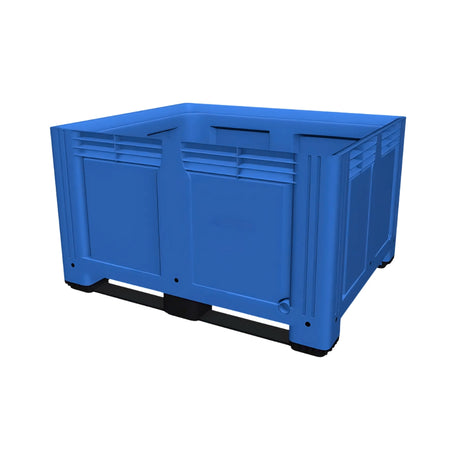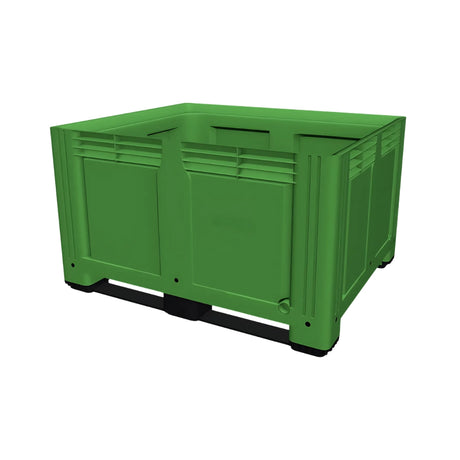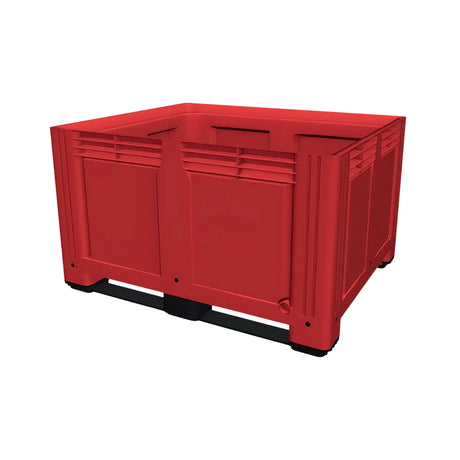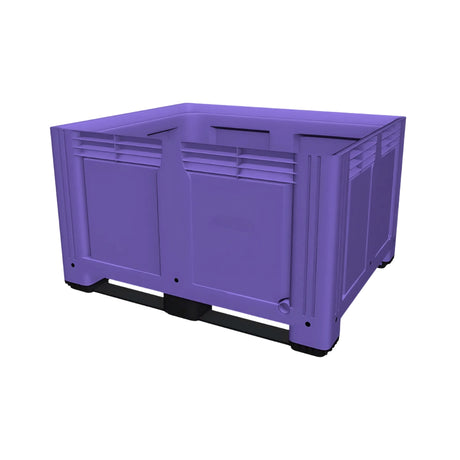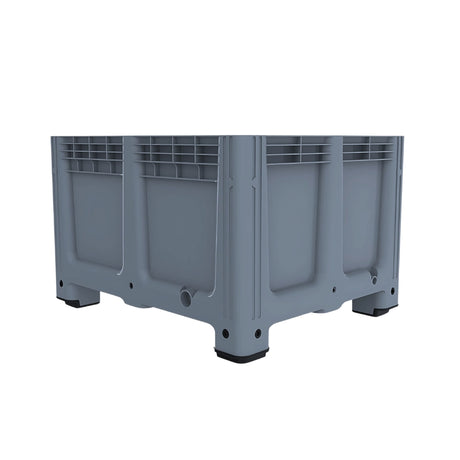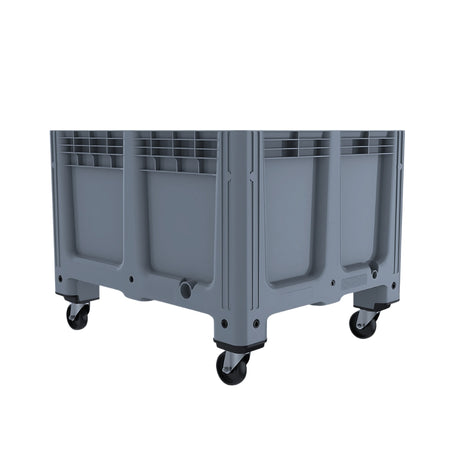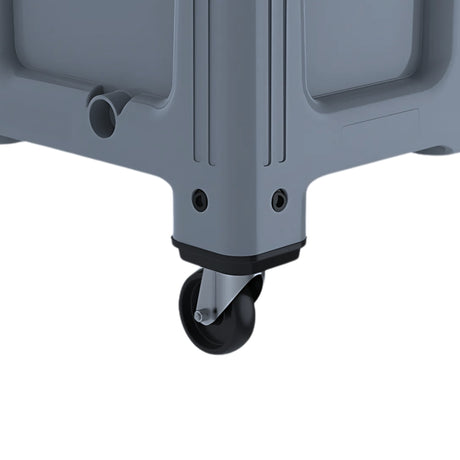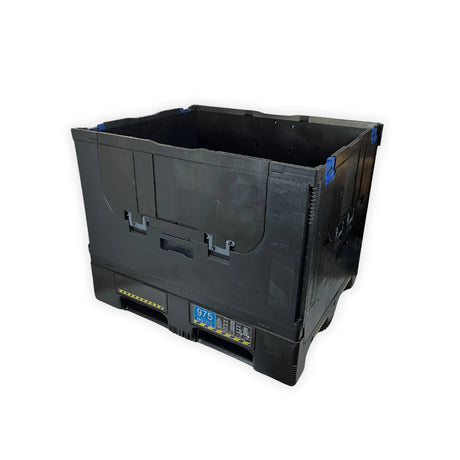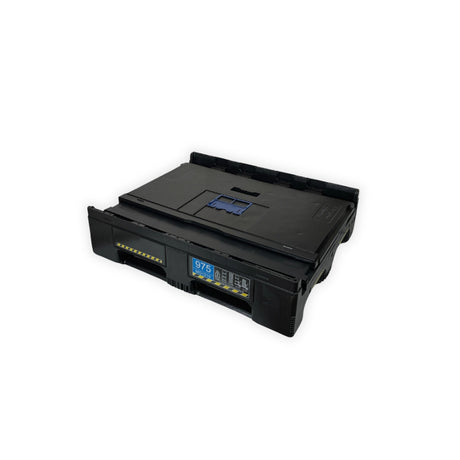It’s hard to overstate how much the humble pallet matters. Every day, millions of them move goods across warehouses, lorries, and loading bays. Yet the choice between wooden pallets and plastic pallets is more than just material - it’s about safety, hygiene, efficiency, and long-term cost.
Wooden pallets have been around for decades. They’re cheap, familiar, and everywhere. But ask anyone in logistics or manufacturing, and you’ll hear the same story: splinters, broken slats, nails catching hands, and stacks that don’t quite line up. That’s why more sites are making the switch to plastic pallets and integrated pallet boxes and euro containers. Once you’ve worked with them, you wonder why you put up with wood for so long.
The Wooden Pallet Problem
Wooden pallets have served businesses well, but they come with serious drawbacks when measured against modern demands:
- Durability: Wooden pallets crack, splinter, and break under repeated use.
- Safety: Exposed nails and splinters create injury risks for staff.
- Hygiene: Wood absorbs moisture and harbours bacteria, pests, and mould.
- Waste: Damaged pallets pile up quickly, creating disposal headaches.
- Inconsistency: Variations in size and build make stacking unreliable.
For many businesses, these downsides aren’t just annoying - they’re costly. A broken pallet mid-shift can delay orders, damage goods, or even cause accidents. And in industries like food and healthcare, wooden pallets simply don’t meet hygiene standards.
Why Plastic Pallets Are the Future
Plastic pallets are designed with modern supply chains in mind. Instead of splintering, warping, or rotting, they’re precision-moulded to deliver reliability shift after shift. Here’s why more sites are switching:
- Strength: Heavy-duty plastic pallets can handle consistent loads without weakening.
- Hygiene: Smooth, non-porous surfaces make cleaning quick and compliance easier.
- Consistency: Identical sizes = perfect stacking and compatibility with racking.
- Longevity: Plastic pallets last far longer than wooden ones, reducing replacement costs.
- Sustainability: Many are made from recycled materials and are recyclable at end of life.
Counting the Costs: Wood vs. Plastic
At first glance, wooden pallets are cheaper. But factor in replacements, downtime, and safety risks, and the numbers change fast. A single plastic pallet might last 10 times longer than a wooden one. Multiply that across a fleet of hundreds, and the long-term savings are obvious.
Plastic pallets also cut indirect costs. Less waste disposal, fewer staff injuries, lower contamination risks, and reduced shipping issues all add up to major efficiency gains. For industries moving high-value goods, the security of reliable pallets is priceless.
Safety First
No one likes splinters - and nails sticking out of wooden pallets are worse. Beyond discomfort, unsafe pallets mean real workplace hazards. Staff handling heavy loads need confidence that their pallets won’t collapse mid-shift. Plastic pallets remove those risks, providing a safer working environment and reducing workplace accidents.
Hygiene Matters
Wooden pallets are a breeding ground for bacteria and pests. That’s why industries like food, pharmaceuticals, and healthcare are under increasing pressure to move to plastic pallets and pallet boxes. Smooth, easy-to-clean surfaces make compliance simple, keeping inspectors - and your hygiene ratings - happy.
Efficiency in Action
Consistency is everything in logistics. Wooden pallets vary slightly in size and build, which makes stacking unstable and transport inefficient. Plastic pallets, by contrast, are precision-moulded. They integrate seamlessly with euro containers, racking, dollies, and conveyor systems, streamlining operations from goods-in to despatch.
Sustainability Without Compromise
There’s a misconception that plastic is less sustainable than wood. In reality, many plastic pallets are made from recycled materials, and their longevity makes them a greener option. Instead of replacing pallets every few uses, you can rely on the same plastic pallet for years. And when it finally reaches end of life? It can be recycled again.
Sector Snapshots: Where the Switch Pays Off
- Warehouses & Logistics: Fewer damaged goods, better stacking, and safer handling.
- Manufacturing: Reliable transport of parts and materials without downtime from breakages.
- Healthcare: Clean, hygienic, and compliant storage and transport options.
- Education & Public Sector: Longer-lasting assets for tight budgets.
- Construction: Pallets that withstand rough treatment and outdoor conditions.
Product Highlights
At G-Force, we supply plastic pallets, pallet boxes, and euro containers that help sites move away from outdated wooden options and toward modern, durable, and efficient storage solutions.
Hygienic Plastic Pallet
Strong, stackable, and built to last, the Hygienic Plastic Pallet is designed for modern warehouses and logistics sites. Smooth surfaces make it perfect for industries where hygiene matters most.
- Available with 5 runners for added stability
- Resistant to weather, moisture, and pests
- Compatible with racking, forklifts, and conveyors
Heavy Duty Plastic Pallet Box
When loads get bigger, the Heavy Duty Plastic Pallet Box is the answer. More durable than wooden crates and easier to clean, it’s the go-to choice for industries that demand bulk storage without compromise.
- Massive capacity for bulk materials and goods
- Optional castors for mobility without forklifts
- Hygienic and easy to clean between uses
Euro Stacking Recycled Plastic Container
Pairing perfectly with plastic pallets, the Euro Stacking Recycled Plastic Container offers organised, stackable storage for components, tools, and products. Built from recycled material, it’s as sustainable as it is strong.
- Standardised 600×400 footprint for easy stacking
- Made from recycled plastic for sustainability
- Widely used across logistics, healthcare, and manufacturing
Checklist: Is It Time to Ditch Wooden Pallets?
- Do you regularly replace broken pallets?
- Have staff reported splinters or pallet-related injuries?
- Are hygiene audits a concern in your industry?
- Do pallets vary in size, causing stacking issues?
- Are disposal costs creeping up from constant breakages?
If you answered yes to two or more, it’s time to explore plastic pallets.
Final Thought: Build on a Stronger Foundation
Wooden pallets have had their day. For modern sites, plastic pallets and integrated pallet boxes and euro containers offer a smarter, safer, and more sustainable way forward. The switch isn’t just about materials - it’s about building a foundation for efficiency, compliance, and long-term savings.
→ Explore plastic pallets, pallet boxes, and euro containers at G-Force





